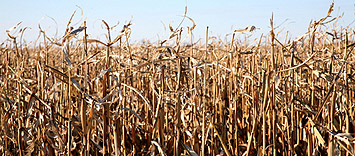 Drought is a natural phenomenon in which rainfall is lower than average for an extended period of time, resulting in inadequate water supply. Drought can lead to public health problems.
Drought is a natural phenomenon in which rainfall is lower than average for an extended period of time, resulting in inadequate water supply. Drought can lead to public health problems.
Overview
Cycles of drought have affected North America for the last 10,000 years. Significant drought events have affected the United States throughout its history. Droughts can last from a single season to many decades and can affect from a few hundred to millions of square miles.
Drought can affect areas or communities differently depending on several additional variables. These variables include
- the structure and capacity of existing water systems,
- local governance of water use,
- economic development,
- the at-risk populations living within the affected area, and
- other societal factors, such as the presence of local social networks.
For Example: Severe drought conditions can negatively affect air quality. During drought, there is an increased risk for wildfires and dust storms. Particulate matter suspended in the air from these events can irritate the bronchial passages and lungs. This can make chronic respiratory illnesses worse and increase the risk for respiratory infections like bronchitis and pneumonia.
Public Health Implications
The possible public health implications of drought include
- compromised quantity and quality of drinking water;
- increased recreational risks;
- effects on air quality;
- diminished living conditions related to energy, air quality, and sanitation and hygiene;
- compromised food and nutrition; and
- increased incidence of illness and disease.
The health implications of drought are numerous and far reaching. Some drought-related health effects are experienced in the short-term and can be directly observed and measured. However, the slow rise or chronic nature of drought can result in longer term, indirect health implications that are not always easy to anticipate or monitor.
For More Information
- Page last reviewed: July 27, 2012
- Page last updated: July 30, 2012
- Content source:


 ShareCompartir
ShareCompartir